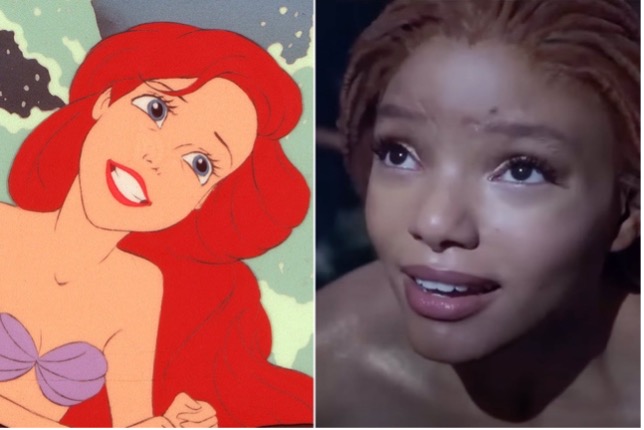When we look at some of the highest-grossing films of the last decade, we don’t always find the diversity we know from our world reflected on the screen. This lack of representation has consequences for our society and the people who do not find themselves on the screen.
What you see often becomes a part of your memory, and thus a part of your life experience.
(Boboltz & Yam, 2017)
#notMyArielle
The remade version of “The Little Mermaid” starring Halle Bailey will hit theaters on May 26, 2023. Walt Disney Studios was forced to disable the Dislike button on the trailer on YouTube after receiving 1.5 million thumbs down in just two days.
Meanwhile, videos of young black children noticing that the new mermaid looks like them are going viral on TikTok. Everyone deserves to have their story told. Looking at the excitement on the young children’s faces makes it clear, how much the representation in media really matters.

The question I am asking myself is why has Hollywood not been shy in the past casting white actors and actresses for non-white roles like Jake Gyllenhaal as Prince of Persia (2010) or Tom Cruise as Last Samurai (2002), but Disney’s The Little Mermaid is the latest target of racist fans?
#OscarsSoWhite
How does the Academy of Motion Picture Arts and Sciences manage to show more diversity for the Oscars, in front of and behind the camera? The new rules are to apply to nominations in the top category “Best Picture” from 2024. It is intended to ensure a minimum number of actors or film crew, production and administrative staff from underrepresented groups.

“To be eligible for Best Picture consideration for the 96th Oscars (2024), a film must meet TWO out of the FOUR standards.” Here you cand find some of the criteria for the first two standards:
Standard A: On-Screen Representation, Themes and Narratives (film must meet at least one criterion)
- At least one actor who is assigned a significant role must be from an underrepresented ethnic group, such as having dark skin.
- The storyline of the film must be about women, LGBTQ people, an underrepresented group, or people with disabilities.
- At least 30 percent of the cast must belong to one of the groups just mentioned.
Standard B: Creative Leadership and Project Team (film must meet at least one criterion)
- Two or more executives (directors, cinematographers, and composers) must be female, part of the LGBTQ community, have a disability, or be part of an underrepresented group.
- At least six other members of the film crew must be part of an underrepresented group.
- Thirty percent of a film crew must be part of one of the categorised groups.
further research
For my further research, I would like to look specifically at Austrian film funding (öfi). How does it deal with the visibility of underrepresented groups in front of and behind the camera? Which films have been funded in recent years? Are there guidelines that a film has to follow in order to be eligible for funding? What has been the development in recent years?
sources:
ACADEMY ESTABLISHES REPRESENTATION AND INCLUSION STANDARDS FOR OSCARS® ELIGIBILITY https://www.oscars.org/news/academy-establishes-representation-and-inclusion-standards-oscarsr-eligibility
Diversity and representation in TV and movies and why it matters https://www.diggitmagazine.com/papers/diversity-and-representation-tv-and-movies-and-why-it-matters
The racist backlash to The Little Mermaid and Lord of The Rings is exhausting and extremely predictable https://www.vox.com/culture/23357114/the-little-mermaid-racist-backlash-lotr-rings-of-power-diversity-controversy